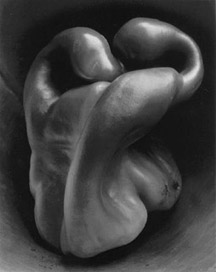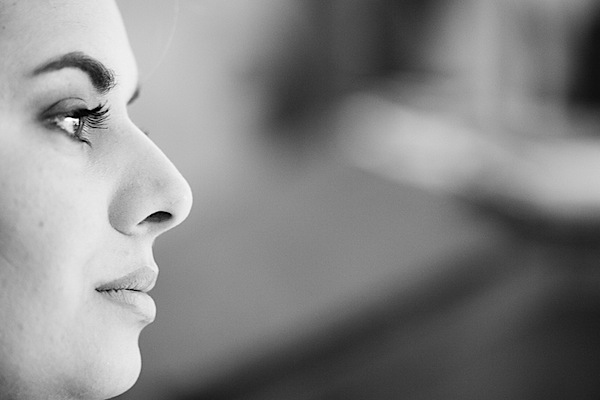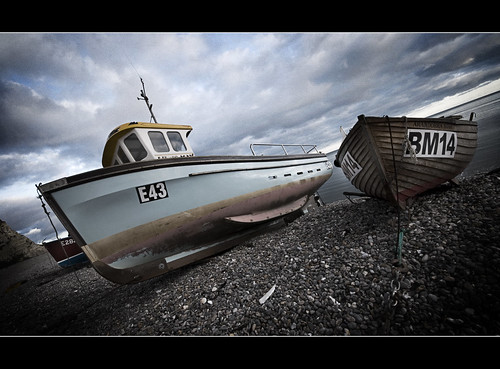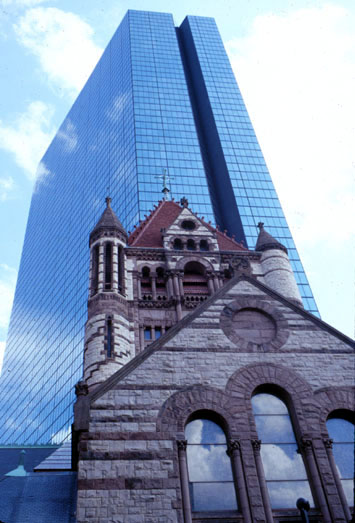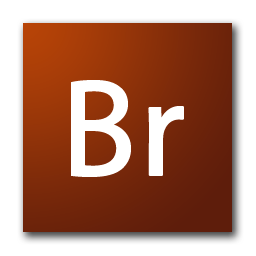Step 5: Open the Film Canister
Once you have found a light-safe a spot, get the developing tank, reels, film, a bottle opener and a pair of scissors.Turn off all lights and use the can opener to pry the top off the film canister. (It is not a bad idea to make a second check for any sources of light before this step)

Step 6: Take the Film Out of the Canister
Touching the emulsion side of the film will affect the chemicals in the developing process, so try to remove the film without making any contact with the film itself. Holding only the plastic knob that sticks out of the canister, pull the film out of the canister. The film will unravel but try not to let it touch the ground.
Step 7: Even Off the End of the Film
Without touching the emulsion side of the film, use your thumb and forefinger to grip the film by the edges and feel toward the end of the film. The end of your film has no exposures on it, so it is safe to touch. Using your fingers as a guide, find your scissors and cut the ‘tongue’ off your film.
Step 8: Load the Reel
Once the film has an even end, it can be loaded on the reel. Take a reel and feed the first piece of film onto it. It may resist at first but once it passes the ball bearing it seems to pop onto the track. (Remember not to touch the emulsion in areas where the film was exposed).Most plastic reels have a self feeding oscillating mechanism that allows the user to feed the film without touching the film. Rotate one side of the reel about 1/8th of a turn and return it to it’s original position, as this action is repeated the film will wind around the track without any significant problems.

Step 9: Cut Off the Plastic End of the Reel
Toward the end of the reel, you will feel the plastic spindle that was used to pull the film out of the canister. It will find it’s way into your palms as you wind up your film. Take the scissors and cut this plastic spindle free and continue to load the rest of your film.Do not pull the tape off the film, as it can cause a small amount of static that can fog your negatives. Once all your film is loaded onto reels place the reels inside your light safe tank and close it up. Be sure that it is secured and all reels are safely inside.
At this point it is safe to turn on the lights and clean up the canisters, lids spindle and discarded film that you have dropped.

Step 10: Before the Developing Process
There are a few techniques that should be covered before beginning the developing process. The quarter turn and tilt agitations are an essential part of developing T-MAX. The quarter turn inversions are used to make sure that all parts of the film get exposed to the chemicals (see the image below). These inversions should take about 1 second and will be repeated several times in the process, so practicing before you start the process is advised.
It is also important to remember that, while most developing tanks take about 20 fl. oz to cover reels, your tank may differ. Check the recommended volume of the tank before pouring chemicals. There is a guide on the bottom of most plastic developing tanks with the recommended amount of chemicals.

Step 11: T-MAX Developer
When all of the chemicals are prepared and your film is loaded in the developing tank, you are ready to start the developing process. Pour enough water to fill your tank and let your negatives soak for 1 minute.You should have already measured out the amount of developer that it takes to cover your reels. The developer should be maintained at 72° but if you are finding it difficult to do that the container has this chart. Pour out the water and pour in the T-MAX Developer.
Once your solution is poured agitate by giving your developing tank the quarter turn and tilt agitations shown in Step 10. Repeat this process 30 times in 30 seconds. Tap to the bottom of your tank, allow the tank to sit for 25 seconds. Agitate again for 5 seconds, tap the bottom again and allow to sit for 25 seconds.
This process of 5 inversions followed by 25 seconds of idleness should be repeated until the developer has had 6 1/2 to 7 minutes in the tank. Pour out and discard your developer.

Step 12: Stop Bath
Pour in 20oz of stop bath and agitate with 1/4 turn inversions for 30 seconds. Pour out and discard.
Step 13: Fixer
Pour in 20oz of fixer. Complete 3 1/2 to 8 minutes of cycles that consist of 15 one second inversions, 3 taps and 45 second rests. Once this step is complete you can open your light safe tank to observe your negatives. If your negatives appear purple and thick continue this process for another cycle and check again.New fixer takes about 3 1/2 minutes, and as you recycle your fixer it will take up to 8 minutes to properly fix your negatives. Once your negatives are similar to the ones shown pour your fixer back into it’s container. If it takes more than 8 minutes for your negatives to clear up it is probably time for new fixer!

Step 14: One Minute Wash
Refasten the lid to your tank and give your negatives a 60 second water wash, then discard the water.
Step 15: Hypo
Use enough HCA to cover your reels. Follow by 1 full minute of full agitation (1 second 1/4 turn inversions). Hypo can be recycled, but it is difficult to tell when the mixture is getting weak.
Step 16: Five Minute Running Water Wash
Give your negatives a 5 minute running water wash. Remove light safe lid and let water pour directly onto the reels.
Step 17: Photo Flo
Toward the end of the water wash apply 2 drops of Photo Flo. Rotating your negatives in this solution helps to distribute the Photo Flo.
Step 18: Drying and Hardening
Remove the negatives from their reels and hang them in a clean dust free area. Do not touch the negatives with dry fingers, but wet your hands in Photo Flo solution and lightly run fingers along drying film to remove excess water. Negatives should be given at least 2 hours before you touch them again.
Step 19: Cutting and Archiving Your Negatives
Once you have your negatives, you will probably want to put them into a archival sleeve whether you are using an enlarger to make a contact sheet and prints later, or you are just scanning them to a digital format.I use Print File's Contact proofing preserver because I like to store the contact sheet right on top of the negatives for easy proofing. You will probably cut after either every 5 frames or 6 frames depending on the negative preserver.

Step 20: Examine Your Negatives
It helps if you have access to a light table here, but you can just as easily hold your negatives into any light source to examine them. A well developed negative has both areas that are fully thick but still has areas where the negative is completely transparent.Thin negatives will result in very gray prints concentrated in the mid tone range, whereas overly thick negatives will result either in prints that are too light and lack detail or gray negatives that appear blurry and fogged.
Inspect the negatives for watermarks, scratches and dust. Scratches to the emulsion side of the film are very difficult to fix. Dust and watermarks are easily removed with an anti-static or micro-fiber cloth (be careful to use clean lintless fabric that is free of grit or dirt they will scratch your negatives).

Well Exposed Negatives
Here is an example of a well developed film. Notice there are areas where the film is comply transparent and there are areas where the negative is completely black. This will result in a print with a full tonal range.
Thin Negatives
If your negatives are thin, you underexposed. If you have negatives similar to these you will end up having a print that is gray and muddy. In the printing process you can try to fix this with high contrast filters that but overall you will end up loosing a lot of the grayscale. There values look unnatural compared with that of a well exposed negative.
Thick Negatives
If your negatives are too thick, you overexposed. While slightly overexposed images have higher contrast prints overall you will loose a few mid-tones. Overly thick negatives will give you a gray print, but unlike underexposed negatives there will be a lot more dark tones. If a negative is very thick, reciprocity failure becomes an issue (this negative is also slightly fogged).
Undeveloped Portions of Your Negative
In this case your film came off the track when were loading the reels. It is rare to have this happen with plastic reels but if metal reels are used it is a more common mistake. If you continue to have these results try practicing with an exposed roll of film with the lights on.






